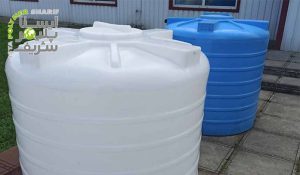The most important element on Earth is water, which is essential for the survival of humans and the well-being of all living creatures. Water is our most valuable resource after oxygen. We all need water storage tanks to meet our daily needs, especially in water-scarce areas. However, water tanks can be breeding grounds for bacteria. Therefore, cleaning and disinfecting the water in the tank is crucial. These tanks, made from various materials like polyethylene, are all prone to growth of various types of bacteria and sludge. Maintaining cleanliness in tanks is vital to reduce the risk of disease transmission through water. This review addresses the reasons for disinfecting water in the tank.
Reasons for Disinfecting Water in the Tank
We all understand the importance of clean and hygienic water. Water is crucial for drinking, washing, agriculture, or any other purpose and for the life of all living beings. However, if we consume water in its contaminated form, we can fall ill. A water tank is always prone to attracting microbes and bacteria. Keeping the water in the tank clean is essential to ensure that clean water is always available. Here are some benefits of cleaning the tank:
Prevents the Occurrence of Diseases!
Some of the diseases that can be caused by contaminated water include typhoid, cholera, diarrhea, and lead poisoning. Dirty water tanks can lead to Legionnaires’ disease, where individuals become infected by inhaling small droplets of contaminated water. This condition arises from the growth and proliferation of Legionella bacteria in unclean water tanks.
Legionnaires’ disease is a serious lung infection. Most people with Legionnaires’ disease experience only mild fever or cold-like symptoms, but for those who are young, elderly, or have underlying health conditions (weakened immune system), this disease can be fatal. Additionally, other harmful bacteria such as E. coli, Shigella, and Salmonella, which cause further health issues, may also grow in the water storage tank.
Corrosion can occur over time in metal water tanks. If the water coming out of the tank is red, your water storage tank may be rusted. Moreover, pathogenic microorganisms may have entered your water storage tank through a host. These hosts are usually pests like insects, rodents, and aquatic species that may have entered the tank due to inadequate covering.
Reduces Maintenance and Repair Costs.
Regular maintenance of the tank is much cheaper than expensive emergency repairs. As a result, pollutants, rust, corrosion, sludge, and bacteria do not cause the tank to deteriorate quickly, thereby increasing its lifespan. A tank that is regularly maintained and operates at peak efficiency will always supply clean water.
Good for Your Skin and Hair.
Clean water is not only essential for your internal organs but also for your skin. When you shower, your skin absorbs all the chemicals present in the water. Any harmful chemicals or substances in the water can cause irritation or permanent damage to the skin and hair. Therefore, clean water is crucial for skin health.
Water Will No Longer Have a Bad Taste or Smell.
A dirty water tank may cause the water to have a bad taste and smell. A bad odor indicates that your water is polluted and the tank needs disinfecting. Also, water that remains in the tank for a long time can develop a bad taste and smell, especially if the tank is outside and exposed to sunlight, which accelerates contamination.
How to Disinfect Water in the Tank

Cleaning and disinfecting the tank should be carried out by a certified individual as performing this task in a confined space is hazardous due to low oxygen and inhalation of toxic gases. Only trained professionals with high knowledge and experience should be used to ensure safe cleaning of the tank and to minimize the risks associated with tank cleaning.
To be adequately prepared for any emergencies that may arise, personnel should use appropriate safety equipment such as oxygen and gas detectors and first aid kits. Additionally, check the products used. The best technicians perform disinfection with environmentally friendly products.
Despite using water purification units, you may not be able to eliminate 100% of all microbes and bacteria in your tank. Therefore, it is essential to have your tank cleaned internally by professionals at least twice a year. Chlorine tablets and UV treatment are often used for disinfecting water.
Conclusion
It is a fact that water is the best medium for the growth and proliferation of microbes and bacteria. A dirty tank can lead to various diseases such as dysentery, cholera, and stomach issues, which can even be fatal. If the tank is not cleaned regularly, it can become easily contaminated, making the water unsafe for consumption. Regular cleaning of the tank prevents the accumulation of dirt and impurities. Disinfecting the water in the tank reduces the risk of sediment and sludge formation and minimizes corrosion of the tank and damage to its structure. Ultimately, you will have access to clean water that you can use for various purposes.






